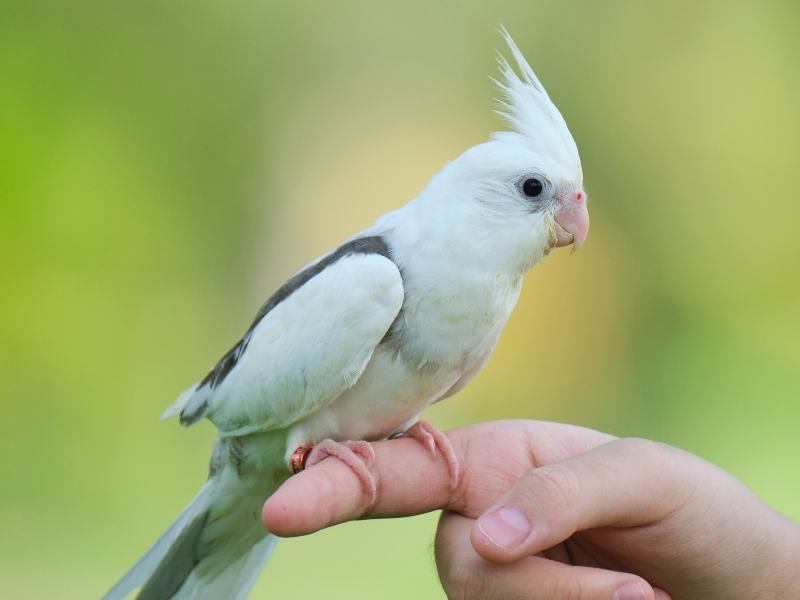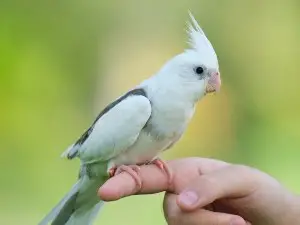
Birds don’t change that much in adulthood, these animals may change quite a bit from when they start off as chicks to when they become adults, but adult birds tend to look the same, so, if your cockatiel starts to show major changes you’d be right to worry
This article is a look into why your cockatiel’s beak is peeling.
Table of Contents
Cockatiel beak peeling:
A change in your bird’s appearance certainly means that there is something going on with your bird but this doesn’t mean that this something is negative. There is a variety of reasons why your cockatiels beak may be peeling, here are a few:
Lack of rough surfaces:
Your bird’s beak may always look the same but the bird’s beak actually never stops growing, what keeps the bird’s beak looking as though it is the same size is the bird grinding away at it on rough surfaces.
Bird beaks are made up of a material called keratin, keratin is the same material that makes up human hair and nails, and just like human hair and nails, it is ever-growing.
Human hair and nails are cut and broken off and that is what keeps the hair and nails at a certain length.
When it comes to birds, a bird will use its beak to climb, forage and excavate crevices, the birds will also rub their beaks against things and this will keep the beaks at a manageable length and will keep it smooth.
If the bird can’t do these things then the bird can’t use its beak to forge, excavate, or climb, and if the bird doesn’t have anything to rub its beak against then the keratin will start to peel off on its own.
What to do:
The bird needs to use its beak in a similar way to how it uses it in the wild, you can help with this by giving the bird a few beak conditioning toys that it can play with and chip away at.
These toys will ensure that the old keratin on the bird’s beak is worn off and this will prevent the bird’s beak from peeling
Different birds will want to use different toys so experiment and then use a toy that your cockatiels like.
A scratch
If your bird’s beak is peeling in one area and has a scratch on it then the bird’s beak may simply be peeling as a way of repairing the scratch.
Birds, cockatiels included, are quite curious animals who like to explore, this exploration is mentally stimulating for the bird but it can also cause injury or a scratch.
The bird’s beak will try to repair this scratch by growing more keratin in the area and allowing the area that was scratched to flake off causing the peeling that you’re seeing.
What to do:
This is perfectly normal and isn’t something to worry about, it is simply how the bird’s beak deals with injuries
You can let the bird be and as long as the bird isn’t bleeding then you don’t have to worry about the bird’s beak. The beak will recover overtime and go back to being smooth when the beak is fully repaired.
Mites:
Mites can also be the reason why your cockatiel’s beak is peeling. Mites can infect your bird on different parts of its body and can cause peeling and flaking.
Initially, when the bird has been infected there aren’t usually any visual changes in the bird but this can quickly change.
One major change that you may notice is thin crusts and plaques developing on the bird’s beak, this usually starts to show up at the corners of the bird’s beak and also on the beak.
The beak will start to develop these pale white plaques and within a few days, they will thicken up and become more crusty. The beak will start to look sponge-like as the mites drill tiny holes or notches in the bird’s beak.
If the mites infect your bird’s face then they can create crusty peeling patches on the bird’s beak and cere and this may be what you’re seeing.
These insects burrow into your bird’s beak and reproduce there making the bird’s skin look dry, and scaley.
Other signs of a mite infestation on your bird include itching, swollen and irritated skin as well as rashes on the bird’s skin. This happens because the mites get into the bird’s skin and secrete metabolic waste which is what irritates the skin.
All of this causes the bird to restlessly scratch and even bite itself to gain some relief.
What to do:
Consulting an avian vet as soon as you realize that the bird may be infested with mites is recommended.
If the bird does not get the treatment that it needs then the bird may suffer severe complications which can be fatal to the bird.
If you enjoyed this article then you may also be interested in other budgie related articles. Here are some articles that you may be interested in: Cockatiel Bruised Beak, Budgie Puberty, Why Is My Canary Sitting In His Food Dish?, Parakeet Laid Eggs In Food Bowl, Budgie Squeaking When Sleeping, Angry Budgie Sounds, Budgie Flapping Wings In Cage

